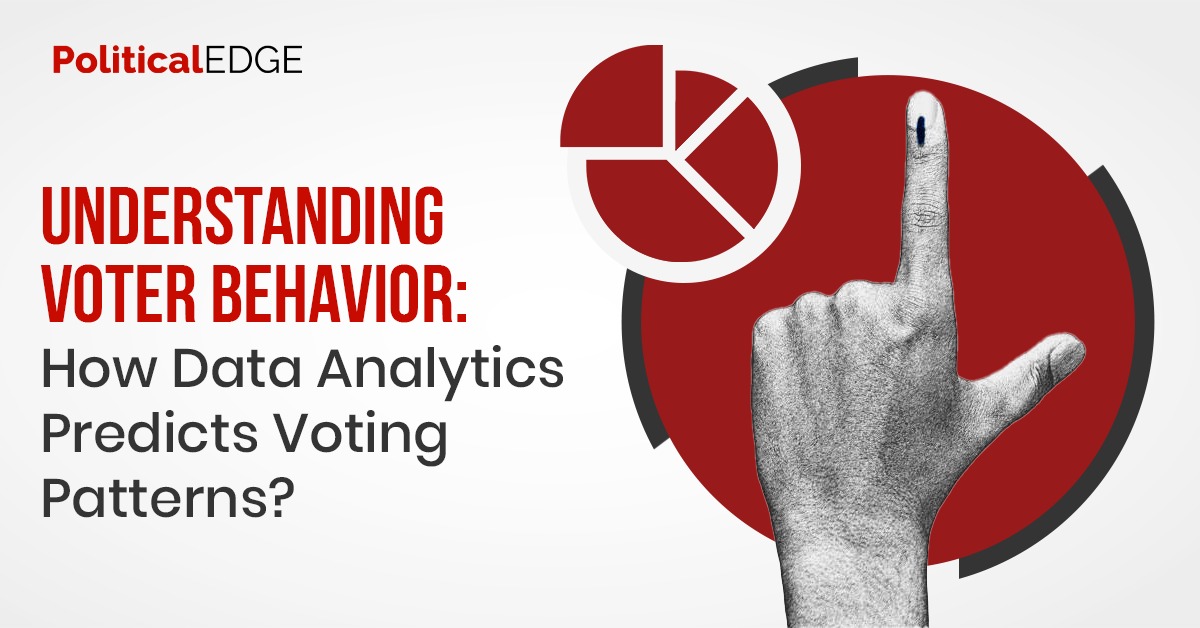
Understanding Voter Behavior: How Data Analytics Predicts Voting Patterns?
Many times, the most intriguing questions about an election don’t have anything to do with the winner, but rather why people cast their ballots the way they did or what the consequences of the outcome are. Sometimes the answers to such questions are complex. It won’t do to focus solely on the activities and incidents of the campaign. To provide a comprehensive explanation, it is necessary to combine the particulars and patterns of the election with knowledge of electoral behaviour at large.
What is The Role of Data in Politics?
Data analytics has revolutionized the way political campaigns are run. Gone are the days of purely anecdotal campaign strategies. today, campaigns rely heavily on data-driven decision-making. Here’s how data plays a pivotal role in understanding and predicting voting patterns:
Demographic Analysis
One of the fundamental aspects of data analytics in politics is demographic analysis. Campaigns collect data on voters’ age, gender, race, income, education, and more. This information helps them segment the electorate and tailor their messages to specific demographics.
Voter Registration Data
Voter registration data provides insights into voter turnout and registration rates among different demographic groups. By analyzing this data, campaigns can identify areas with high or low voter registration rates and strategize accordingly.
Polling and Surveys
Campaigns conduct polls and surveys to gauge voter sentiment and preferences. These surveys provide valuable data on issues that matter most to voters and the candidate’s standing in the race.
Social Media Data
In the age of social media, platforms like Facebook, Twitter, and Instagram offer a treasure trove of data. Political campaigns can analyze user behavior, engagement with political content, and sentiment analysis to gauge public opinion.
Fundraising Data
Campaign finance data reveals which demographics are contributing to a candidate’s campaign. This information helps campaigns focus their outreach efforts and fundraising strategies.
What Do You Understand by Predicting Voting Patterns?
Now that we understand the role of data in politics, let’s explore how data analytics predicts voting patterns:
Predictive Modeling
Data analysts use predictive modeling techniques to forecast election outcomes. These models take into account various factors, such as historical voting patterns, demographic data, and polling data. Machine learning algorithms are often used to make these predictions more accurate over time.
Microtargeting
Microtargeting involves creating highly tailored messages for specific voter groups based on their demographics and preferences. Data analytics helps campaigns identify swing voters and undecided voters who can be swayed by targeted messaging.
Voter Turnout
Data analytics can predict voter turnout by analyzing historical data and current trends. Campaigns use this information to allocate resources effectively and mobilize voters in key areas.
Issue Prioritization
Understanding which issues resonate most with voters is crucial. Data analysis of polling and survey data helps campaigns prioritize their messaging and address concerns that matter most to voters.
Geospatial Analysis
Geographic information system (GIS) technology is used to analyze spatial data, helping campaigns identify areas where their message is likely to have the most impact. This includes identifying swing districts and potential battleground states.
Social Media Analysis
Social media sentiment analysis helps campaigns gauge public sentiment toward their candidates and issues. This data informs their social media strategies and allows for real-time adjustments to messaging.
What are the challenges?
The study of election behavior is characterized by two main considerations. One issue is attempting to explain the outcome of the election by tracing the origins of each voter’s voting habits. By comprehending the voting process and the reasons behind the voters’ decisions, we try to comprehend the election result. Voting pattern variations through time are emphasized in voting studies, usually in an effort to understand what the outcomes of elections can teach us about the course of politics. In this instance, our attention is drawn to the dynamics of electoral behavior, particularly in light of recent and anticipated events. Although these two issues are not in conflict, they do highlight various sets of study problems.
While data analytics has transformed political campaigns, it is not without its challenges and ethical considerations:
- Privacy Concerns
- Bias in Data
- Misuse of Data
- Over Reliance on Data
Conclusion
Data analytics has fundamentally changed the way political campaigns are conducted, allowing candidates and parties to better understand and predict voter behavior. Through demographic analysis, predictive modeling, microtargeting, and more, campaigns can craft more effective strategies and messages to secure votes. However, it is essential to approach data analytics in politics with transparency, ethics, and respect for privacy to maintain the integrity of the democratic process. As technology continues to advance, the role of data in politics will only become more prominent, making it crucial for campaigns to harness its power responsibly and ethically.

